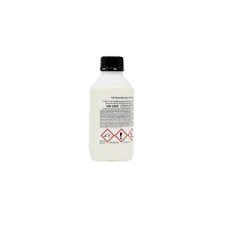coagulation flocculation
Coagulation and Flocculation Essential Processes in Water Treatment
Coagulation and flocculation are critical processes utilized in water treatment to remove suspended solids, organic matter, and contaminants from water sources. These processes serve a fundamental role in delivering clean, safe drinking water and ensuring the effective treatment of wastewater. Understanding these processes involves exploring their mechanisms, applications, and importance in environmental science and public health.
Mechanisms of Coagulation and Flocculation
Coagulation is the initial step where coagulants, typically chemical substances such as aluminum sulfate (alum) or ferric chloride, are added to water. These coagulants destabilize the suspended particles by neutralizing their negative charges, which normally keep them dispersed in the water. Once the particles lose their repulsion, they begin to agglomerate or clump together—a phenomenon facilitated by various forces such as Van der Waals forces and Brownian motion.
Following coagulation, the process of flocculation takes place. This involves the gentle mixing of water to encourage the agglomerated particles, now referred to as flocs, to grow larger and settle more easily. Chemical additives known as flocculants, such as polyacrylamides, may also be introduced to enhance floc formation and stability. The combined action of coagulation and flocculation results in the creation of larger, denser flocs that can be effectively removed from the water through sedimentation or filtration.
Applications in Water Treatment
Coagulation and flocculation are widely applied in both municipal water treatment plants and industrial wastewater treatment facilities. In municipal treatment, these processes remove turbidity, pathogens, and harmful contaminants from raw water sources such as rivers, lakes, and reservoirs. The effectiveness of these processes directly influences the quality of drinking water supplied to communities, making them essential for public health.
coagulation flocculation

In industrial settings, coagulation and flocculation are employed to treat wastewater before it is discharged into the environment. This treatment is imperative for reducing the environmental impact of industrial effluents, which may contain heavy metals, oils, and other toxic compounds. By removing these contaminants, industries not only comply with regulations but also contribute to the conservation of water resources.
Importance for Public Health and Environment
The significance of coagulation and flocculation extends beyond water clarity and aesthetics. By effectively removing pathogens and hazardous substances, these processes play a crucial role in preventing waterborne diseases and protecting human health. Additionally, clean water reduces the burden on healthcare systems and promotes overall societal well-being.
Environmentally, the processes help maintain the ecosystem's balance. By treating wastewater before it is released, the harmful effects on aquatic habitats can be mitigated, protecting biodiversity and ensuring cleaner water bodies. Thus, the integration of coagulation and flocculation in water treatment not only safeguards public health but also promotes sustainability and environmental stewardship.
Conclusion
In summary, coagulation and flocculation are indispensable processes in the realm of water treatment. Their ability to efficiently remove contaminants ensures that we have access to clean and safe water, which is fundamental for health and well-being. As we continue to face challenges related to water quality and availability, advancing these processes will be crucial for meeting the growing demands of a changing world. Emphasizing their effectiveness and importance can lead to improved practices and innovations in water treatment technologies, contributing to a healthier future for all.
-
The Power of Isothiazolinones in Modern ApplicationsNewsMay.08,2025
-
Flocculants in Water TreatmentNewsMay.08,2025
-
Flocculants and Chemical Solutions: What You Need to KnowNewsMay.08,2025
-
Flocculants and Chemical Solutions: A Growing IndustryNewsMay.08,2025
-
Essential Chemicals: Polymaleic Anhydride and MoreNewsMay.08,2025
-
Acrylic Polymers: Essential Solutions for IndustryNewsMay.08,2025





